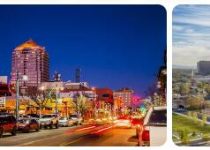Geography of Carbon County, Montana
Geography of Carbon County, Montana
Carbon County, located in the south-central part of Montana, is a region of stunning natural beauty, diverse landscapes, and rich history. Encompassing approximately 2,062 square miles, the county is known for its rugged mountains, pristine rivers, and vast stretches of open land. From its towering peaks to its rolling plains, Carbon County offers a wealth of geographical features that shape its identity and provide opportunities for outdoor recreation and exploration.
Topography:
According to growtheology, Carbon County’s topography is characterized by its diverse terrain, which includes mountains, valleys, and plains. The county is situated within the Rocky Mountains and is part of the Greater Yellowstone Ecosystem, home to some of the most spectacular landscapes in the United States. Elevations in Carbon County range from around 3,000 feet above sea level in the river valleys to over 12,000 feet at the summit of Granite Peak, the highest point in Montana.
The landscape is shaped by the geological forces that have sculpted the Rocky Mountains over millions of years, including glaciation, erosion, and tectonic activity. The Absaroka and Beartooth mountain ranges dominate the eastern and southern parts of the county, while the river valleys and plains are characterized by rolling hills and fertile agricultural land.
Climate:
Carbon County experiences a semi-arid climate, with long, cold winters and short, warm summers. The region is known for its extreme temperature fluctuations, with temperatures often dropping below freezing in the winter and rising above 90°F (32°C) in the summer. Precipitation is relatively low, with most of it falling as snow in the winter months.
The county’s climate is heavily influenced by its mountainous terrain and proximity to the Continental Divide. Snowfall is common in the higher elevations, particularly in the Absaroka and Beartooth ranges, where deep snowpack can persist well into the spring. The melting snow feeds numerous rivers and streams, providing crucial water resources for the region’s ecosystems and agricultural activities.
Rivers and Streams:
Carbon County is blessed with an abundance of rivers and streams, which provide habitat for fish and wildlife, as well as opportunities for fishing, boating, and other recreational activities. The Yellowstone River, one of the longest undammed rivers in the contiguous United States, flows through the southern part of the county, offering world-class fishing for trout and other freshwater species.
In addition to the Yellowstone River, Carbon County is home to several other major waterways, including the Stillwater River, the Clarks Fork of the Yellowstone River, and the Boulder River. These rivers and streams wind their way through the county’s rugged landscape, providing scenic beauty and important habitat for aquatic species.
Lakes and Reservoirs:
While Carbon County does not have any large natural lakes, it is home to several reservoirs and impoundments that provide opportunities for fishing, boating, and other water-based activities. Cooney Reservoir, located in the northern part of the county, is one of the most popular recreational destinations in the region, with over 500 acres of water surface and amenities such as boat ramps, campgrounds, and picnic areas.
Other smaller lakes and reservoirs in Carbon County include East Rosebud Lake, Mystic Lake, and Emerald Lake. These bodies of water provide important habitat for fish and wildlife, as well as opportunities for outdoor recreation and relaxation.
Parks and Wilderness Areas:
Carbon County is home to several parks and wilderness areas, which offer opportunities for hiking, camping, and wildlife viewing. The Absaroka-Beartooth Wilderness, located in the eastern part of the county, is one of the largest wilderness areas in the United States, encompassing over 944,000 acres of pristine wilderness. The wilderness area is known for its rugged mountains, alpine lakes, and abundant wildlife, including grizzly bears, wolves, and mountain goats.
In addition to the Absaroka-Beartooth Wilderness, Carbon County is home to several other protected areas, including Red Lodge Mountain Ski Resort, which offers skiing, snowboarding, and other winter sports, and Yellowstone National Park, which lies just to the south of the county and is known for its geothermal features, wildlife, and scenic beauty.
Agriculture and Ranching:
Agriculture and ranching are important industries in Carbon County, with vast stretches of open land supporting a variety of crops and livestock. Major crops grown in the county include hay, barley, and wheat, as well as specialty crops such as potatoes and sugar beets. Livestock production is also important, with cattle, sheep, and bison being raised on ranches throughout the region.
The county’s agricultural heritage is celebrated through events such as the Carbon County Fair and Rodeo, which showcase the achievements of local farmers and ranchers and feature livestock shows, agricultural exhibits, and rodeo events. Agriculture plays a central role in the county’s economy and culture, shaping its landscape and providing sustenance for its residents.
Conclusion:
In conclusion, Carbon County, Montana, is a region of breathtaking natural beauty, diverse landscapes, and abundant outdoor recreational opportunities. From its rugged mountains to its pristine rivers and vast stretches of open land, the county offers a wealth of geographical features that shape its identity and provide opportunities for exploration and adventure.
Despite its remote location and harsh climate, Carbon County is home to vibrant communities, thriving ecosystems, and a rich cultural heritage. As stewards of this remarkable landscape, it is imperative to preserve and protect the natural treasures of Carbon County for future generations to enjoy and appreciate. Whether hiking in the Absaroka-Beartooth Wilderness, fishing in the Yellowstone River, or exploring the county’s agricultural heritage, visitors to Carbon County are sure to be captivated by its beauty and charm.


